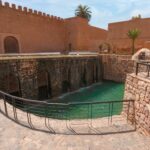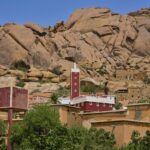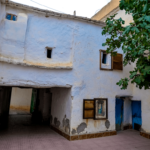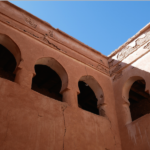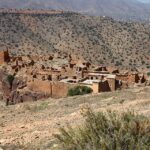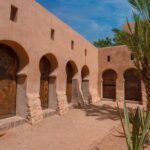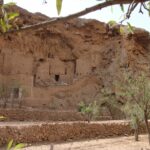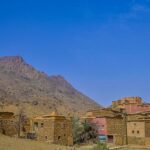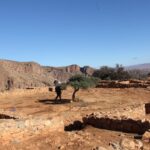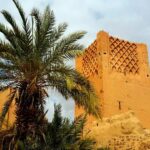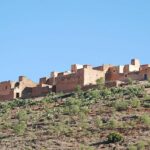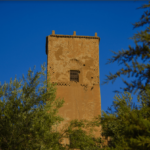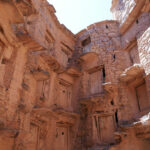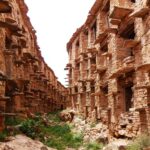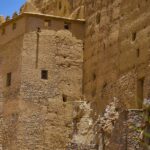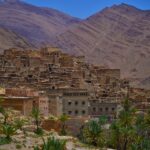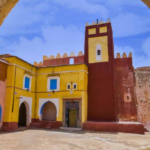Morocco, shown by its colorful ethnic setting and fascinating history, cradles some of the most unique neighborhoods of the old cities which mellahs are one of. These districts which are embodied with solemnity and importance are part of the country’s Jewish Heritage and its rich cultural legacy.
What is a Mellah ?
The word “mellah” refers to a fortified Jewish part of the city in Morocco, which often originates from the medieval era. The mellahs were introduced as a form of housing for merchant and artisanal communities built close to the royal palaces and other administrative centers. These communities exhibited typical style of architecture, community synagogues and markets serving specifically those Jews which were merchants and artisans.
Origins and Development
The Mellahs in Morocco established during the reign of Marinid dynasty in the 15th century constituted a turning point that was significant with regard to the history of the Jewish communities in North Africa. This enclosure of communities created an opportunity for the Jews to find a sort of refuge, strengthening the consciousness of trust in the turbulent times of change. Dwelling within the mellahs the Jews excelled, practising trade, craft and cultural exchange, which was very beneficial to the country hence adding their folk traditions in the urban fabric of Morocco. After being in their place so long, mellahs turned into prosperous Judaic hubs, where Jews practiced their religion and traditions while also continuously adding to the cultural heritage of Morocco. Jews had lived for centuries in Morocco and this historical heritage leaves a strong mark on the continuing story of Moroccan identity and Jewish heritage.
Architecture and Layout
Jews of the mellah were confined in close, maze-like, and gated districts, as a security measure and to create a degree of separation from the adjacent Muslim neighborhoods. From courtyard houses that reflected both Moroccan and Jewish styles to elaborate, multi storey mansions with a variety of materials used in the decor, the residential architecture highlighted Jewish creativity and resilience. Synagogues, schools, and communal baths formed the heart of the mellah and the community, where people knew each other and their own, and settled more deeply.
Daily Life in the Mellah
In the Mellah, people and the community were flourishing and it was a mixed life. Households, for instance, were the center of the jewelry, know how, textile and mercancy, extending the local trade that included the gift of knowledge from the Moroccan community to the Jew Festivals and ceremonial practices that were the gathering points for the community helped in the decades long support to the maintenance of the cultural tradition. The mellahs were the areas that had been intended for the Jewish community. Those areas characterized by the constant contact between different cultures resulted in an economic and cultural thriving of the Jewish community inside those areas and now we can say that they left their imprint on the Moroccan historical tapestry.
Mellahs: Tolerance and Cultural Heritage
Despite the occasional tensions, the Jewish and Muslim communities managed to live together in harmony, adopting each others’ customs in the mellahs. This cultural conglomeration wonderfully boosted Morocco’s identity and has eternally marked its artistic and intellectual heritage. On the other hand, the mid-20th century witnessed the decadence of these flourishing communities as the majority of Moroccan Jews went to Israel or other countries. The mellahs, once vibrant centers of Jewish culture, gradually lost their residents. However, their legacy remains strong even though it is manifested in historic landmarks and the memories of people who used to live in these unique and historically significant areas.
The Mellahs in Souss Massa
Before the earthquake, Agadir had its own Mellah, in which lived Jewish refugees of Spanish and Portuguese origin, called Megorachim. However, the Mellahs of Taroudant, Tiznit, Tata, and Tafraout served as homes for other Jewish communities in the Souss-Massa region, too. Here, Jews and Berbers lived peacefully, sharing similar daily life which was characterized by tolerance, fellow-feeling, good friendship, and neighborly love. This symbiosis was a proof of their mutual respect and comprehension which contributed to the cultural development of these groups in a very positive way.
